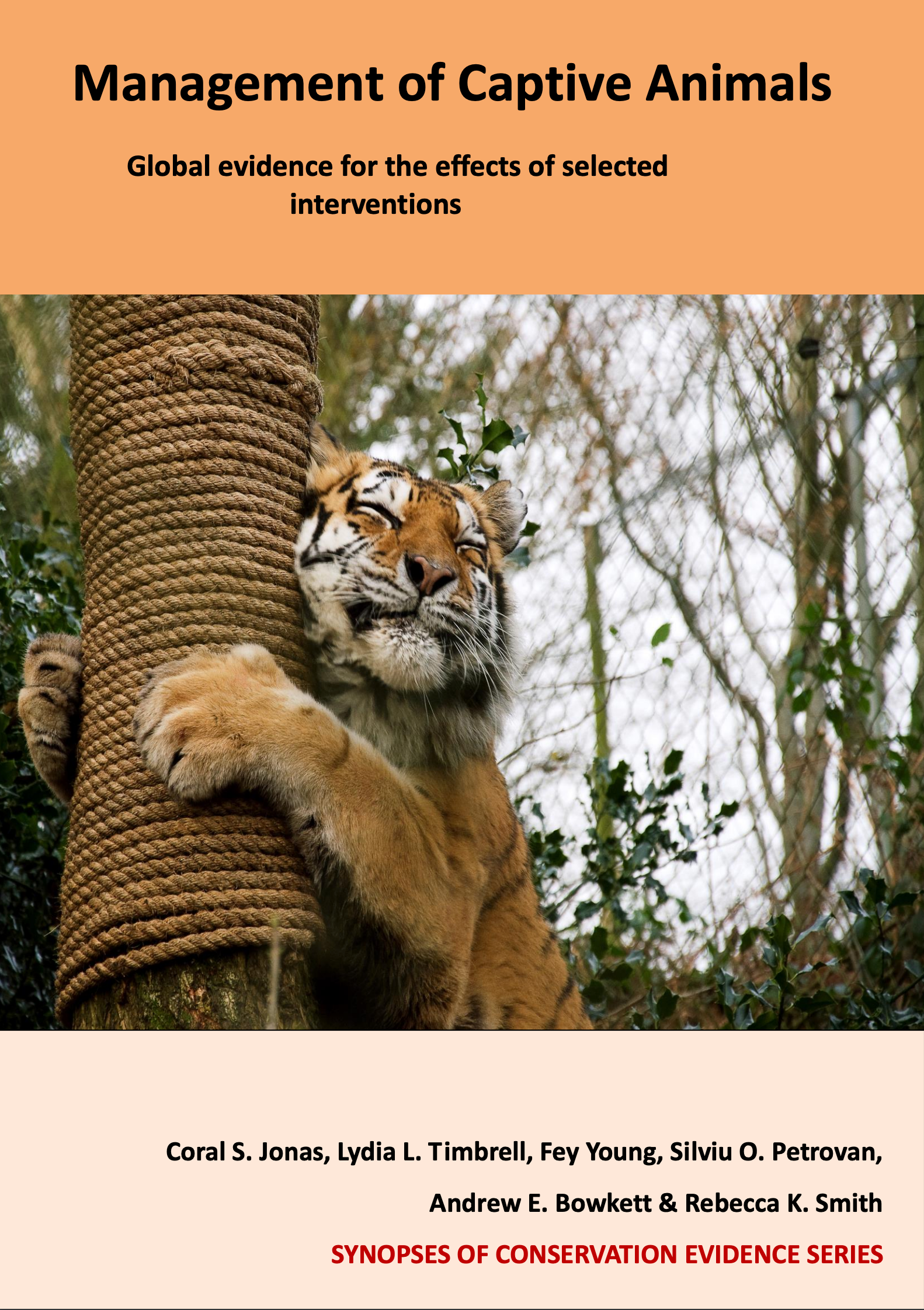Primates: Present food dipped in food colouring
-
Overall effectiveness category Unknown effectiveness (limited evidence)
-
Number of studies: 1
View assessment score
Hide assessment score
How is the evidence assessed?
-
Effectiveness
50% -
Certainty
20% -
Harms
20%
Study locations
Supporting evidence from individual studies
A before-and-after study in 1985 in the USA (Barbiers 1985) found that when food was dipped in food colouring juvenile and adult orangutans Pongo spp. ate more and adults took less time to consume the food compared to when food was not coloured. The time adults spent feeding on chow decreased from 17 minutes when it was not coloured to 13 minutes when it was coloured. Juveniles averaged 1–2 pieces of plain chow daily, which increased to three coloured pieces, while the adults’ daily consumption increased from 75 pieces to 84 once it was coloured. ‘Purina’ monkey chow was dipped in red, green, blue and orange food colouring and offered to three adults and two juveniles. Equal numbers of differently coloured pieces of chow were offered. Observations took place for 45 minutes/day for eight days with uncoloured chow, coloured chow and then uncoloured chow again. (CJ)
Study and other actions tested
Where has this evidence come from?
List of journals searched by synopsis
All the journals searched for all synopses
This Action forms part of the Action Synopsis:
Management of Captive Animals
Management of Captive Animals - Published 2018
Captive Animal Synopsis





)_2023.JPG)














